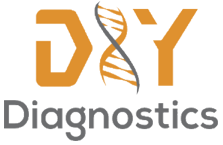 The DIY Diagnostics stream is a conglomeration of hands on science, chemistry, computer science, and engineering. So basically, any project that came to mind could’ve been made possible. I am most excited about the electronic projects because they use science concepts as backgrounds for their projects, but they’re using more computer science and engineering to develop it. They will essentially be the coolest diagnostics. This semester, I am embarking on a research journey to develop a diagnostic that would overcome the adversity of Alzheimer’s Disease. By researching the effects and its causes I will be using a biomarker (a measurable substance in an organism whose presence is indicative of some phenomenon such as disease, infection, or environmental exposure) and compare it to negative (no response is expected) and positive controls (receives a treatment with a known response) to compare it to the sample. The design will utilize a lateral flow assay designed by our group. Being in a group and with like-minded peers has helped me grow as a person and a student. By combining our ideas, we are enhancing our projects to an unfathomable extent. For example, when we were in the process of designing mobile apps, the skills each one of shared with each other helped us excel in the project overall. That was a time I realized that I should treat Java and HTML as language (even though it is) and learn each command and what it does so I can work on programs more efficiently. Apart from that, collecting samples for Waller Creek was fun and we had an adventurous time going out and sampling. Overall, I have learned that research can be tedious, but it is definitely fun especially when we start collecting data and seeing results. From being in DIY I learned that making a diagnostic for anything is possible if you are passionate about it and if I need anything Dr. Riedel will help me to the best of his ability.
The DIY Diagnostics stream is a conglomeration of hands on science, chemistry, computer science, and engineering. So basically, any project that came to mind could’ve been made possible. I am most excited about the electronic projects because they use science concepts as backgrounds for their projects, but they’re using more computer science and engineering to develop it. They will essentially be the coolest diagnostics. This semester, I am embarking on a research journey to develop a diagnostic that would overcome the adversity of Alzheimer’s Disease. By researching the effects and its causes I will be using a biomarker (a measurable substance in an organism whose presence is indicative of some phenomenon such as disease, infection, or environmental exposure) and compare it to negative (no response is expected) and positive controls (receives a treatment with a known response) to compare it to the sample. The design will utilize a lateral flow assay designed by our group. Being in a group and with like-minded peers has helped me grow as a person and a student. By combining our ideas, we are enhancing our projects to an unfathomable extent. For example, when we were in the process of designing mobile apps, the skills each one of shared with each other helped us excel in the project overall. That was a time I realized that I should treat Java and HTML as language (even though it is) and learn each command and what it does so I can work on programs more efficiently. Apart from that, collecting samples for Waller Creek was fun and we had an adventurous time going out and sampling. Overall, I have learned that research can be tedious, but it is definitely fun especially when we start collecting data and seeing results. From being in DIY I learned that making a diagnostic for anything is possible if you are passionate about it and if I need anything Dr. Riedel will help me to the best of his ability.

